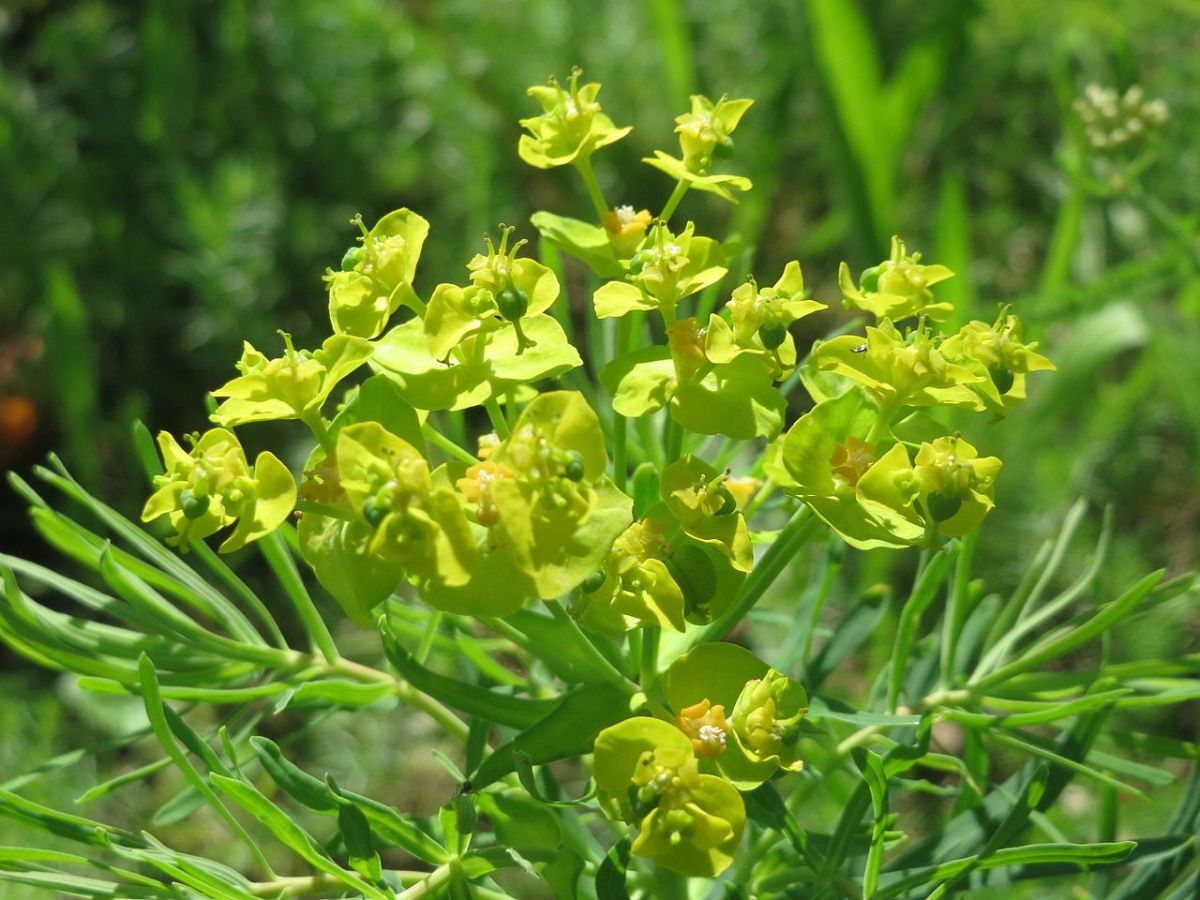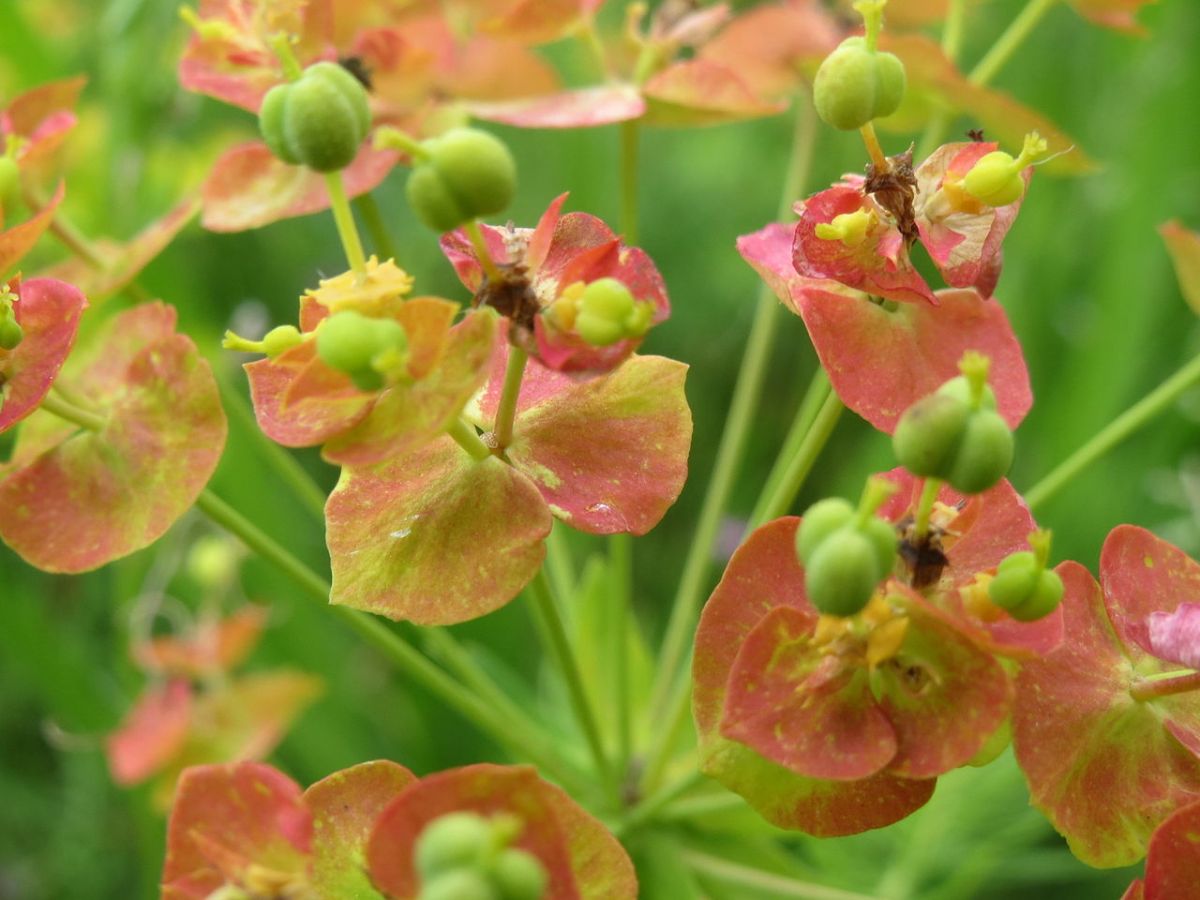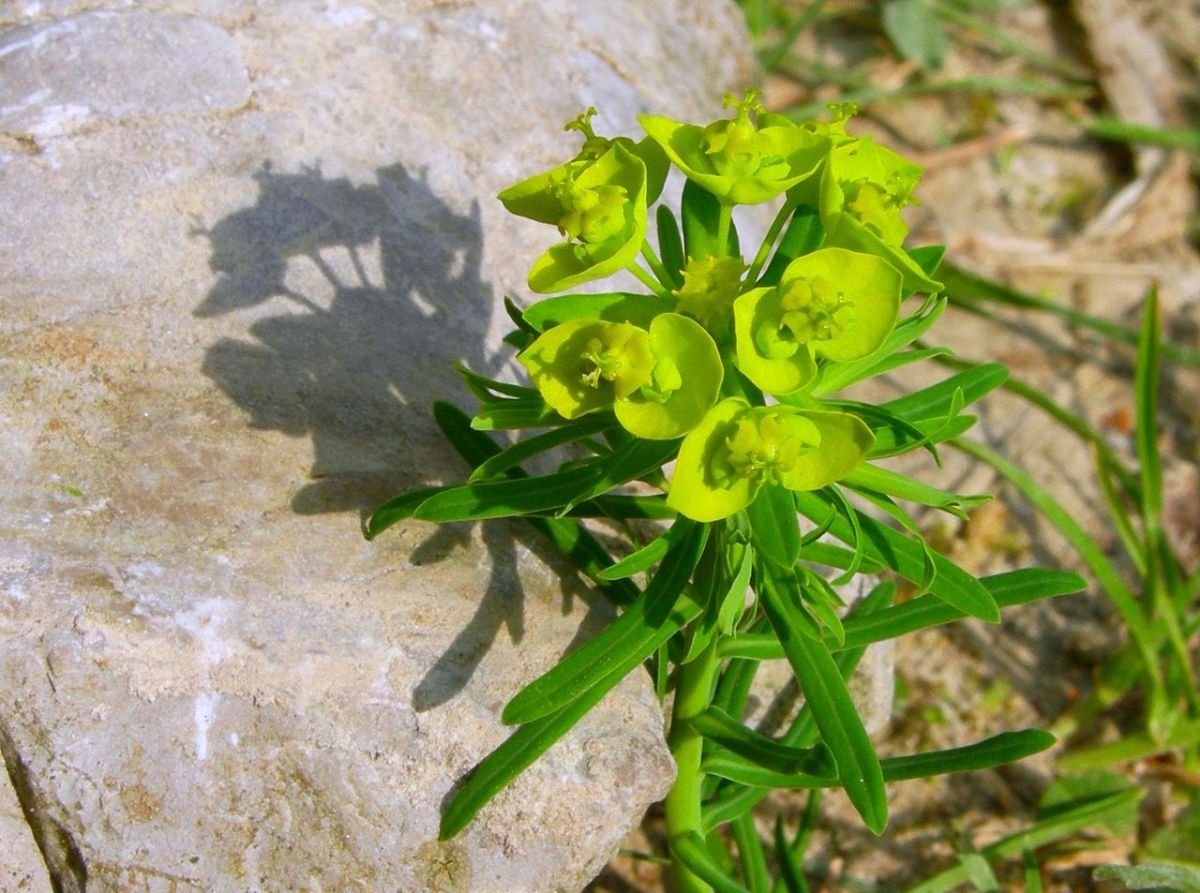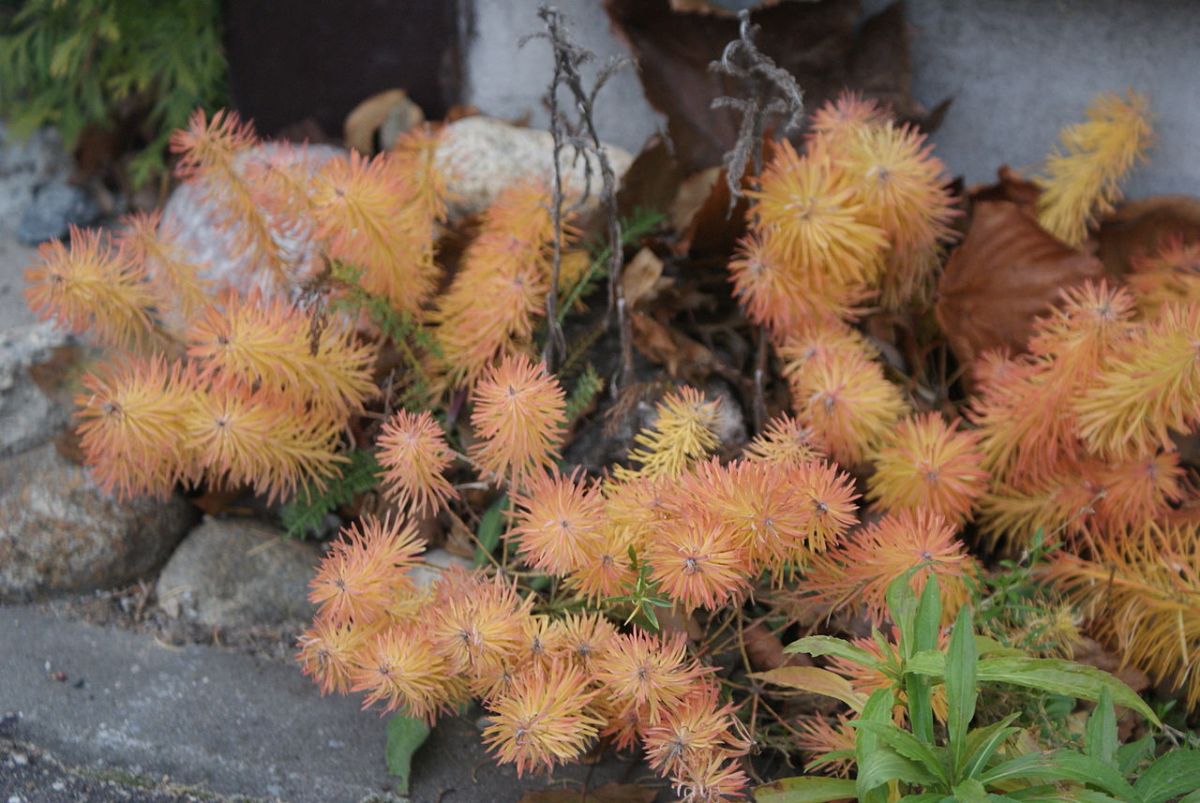
Have you ever heard of the Euphorbia cyparissias? Perhaps you know it by other names, such as euphorbia, cypress euphorbia, milk thief ... Do you have one at home or has it caught your attention? Well, here we will talk about this plant.
Know a little more about the characteristics of the Euphorbia cyparissias, its care and some curiosities that it has that are unknown to you.
Features Euphorbia cyparissias

La Euphorbia cyparissias It is from the Euphorbiaceae family, and native to Europe, although now it can be found in practically every country in the world. Unlike other plants of the family, this one is deciduous. It is characterized by being a shrubby and woody herbaceous plant, which reaches 30 centimeters in maximum height (and 10cm minimum). Its distribution usually appears as an open bush with straight, reddish stems, covered by long, narrow leaves of a very striking emerald green color, similar to those of fir trees. In addition, in the fall the hue of the leaves changes to a more reddish color.
As for the flowers of the Euphorbia cyparissiasThese can be either yellow or orange. They are arranged in small groups, all together forming an umbrella, and after them the fruit appears, which will be a small capsule.
Many consider the Euphorbia cyparissias like a Invasive species, because it is very easy to reproduce and to invade the space of other plants. In addition, it is harmful to both horses and any livestock or animal. If we add the fact that it usually grows in forests, grasslands, next to bushes, forest tracks, etc. in siliceous, limestone and shale soils, it makes it more accessible, and a greater danger.
Caring for the Euphorbia cyparissias

Next we are going to talk to you about the care that the Euphorbia cyparissias. Although before we have told you about its dangerousness, if you have it under control it should not be a problem, but a very original way to decorate your garden. Or in a pot. It is one of the plants that best adapts to life on earth or in a pot, and you will only have to control some factors that we will discuss below.
Location
You can put it in the ground but also in a pot. We recommend that you choose a wide one, because it tends to develop the roots a lot and if you put it in a very fair one in a matter of weeks you would have to change it.
When it reaches a considerable height and dimension, it must be passed directly to the ground.
Lighting design
La Euphorbia cyparissias it is a plant that requires sun. Too much sun. Therefore, you should place it whenever you can full sun, which is also very resistant to sunlight and high temperatures.
In fact, it also supports the losses very well because it is able to withstand up to -17 degrees without the plant suffering.
Land
He likes soils that are dry and draining very well, to avoid accumulations of water (both outside and inside the earth).
It does not matter that they are hard soils or that almost no plants grow, this one will and will make its way thanks to the roots it has.
Irrigation
You don't need much. In fact, if you overdo it, you can put it in danger and end up dying. Therefore, when watering, do it moderate form (even when it is in full sun or temperatures are very high).
In general, a weekly watering in summer and every 2-3 weeks (or even a month) in winter is more than enough. In addition, you should not pour too much water in those irrigations.
Fertilizer
La Euphorbia cyparissias does not need fertilizers. Being able to get by on tough ground, you don't have to give it a "power boost" to get it done.
If you want to kick him out, it will not hurt him, but he will not need it to grow well and develop properly.
Plagues and diseases
Before we have commented that it is a dangerous plant for animals. And this is the reason why pests do not usually affect it, because the insects and animals themselves flee from it so as not to end badly.
As for diseases, one of the main ones has to do with excess watering. Beyond that he is tough and strong enough to fight any adversity.
Flowering
La Euphorbia cyparissias it blooms at the end of spring and will remain so until August, when the fruits begin to appear.
The flower, as we have explained before, will appear in groups, in the shape of an umbrella, of a yellow or orange hue, with the petals wide open.
Reproduction
La Euphorbia cyparissias reproduces in two different ways:
- By seeds, that the plant offers from August making it acquire a reddish or purple hue. It is said that the fruits are explosive, and when they are ripe they explode to be able to spread the seeds up to 5 meters away.
- By segments of the bush, that is, dividing the original plant. It is a way to keep the plant in pots since what is done is to divide it into several smaller ones to have more plants and, at the same time, that they develop separately.
Curiosities

One of the main curiosities that we can tell you about the Euphorbia cyparissias is that it is a plant that, in the past, was used as vomitive and purgative. In other words, that people used it, either for human use or for animal use, in order to vomit whatever was hurting them, or if they had an upset stomach.
However, it has been found that it is poisonous, so using it for this purpose can put your body and life at risk. Mainly it can affect the digestive system, causing discomfort that, in case of having ingested a large amount, can end up wreaking havoc on it, causing vomiting, burning, swelling, high fever, etc.
Now that you know a little better the Euphorbia cyparissiasWould you have it in your garden or in a pot?
It suggests a very striking species for its vigor, persistence, its little care, keeping in mind to place it in direct sunlight and ration its waterings.
Where could it be purchased?
Hello Mario.
We recommend looking for seeds on ebay for example. They usually sell there.
Greetings.